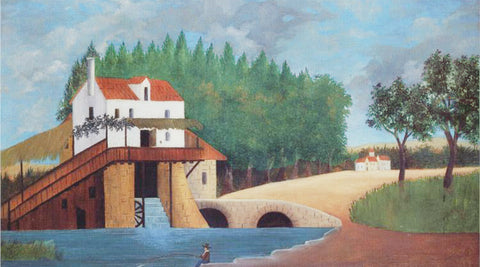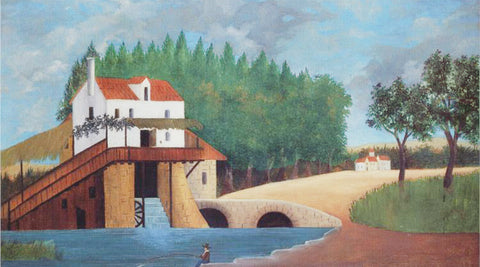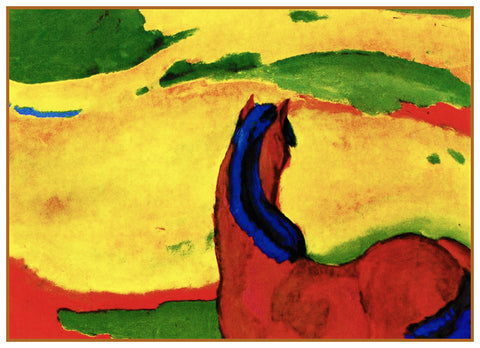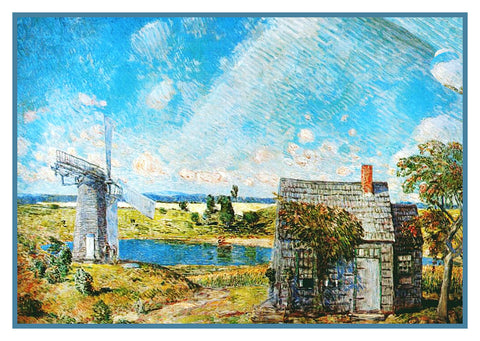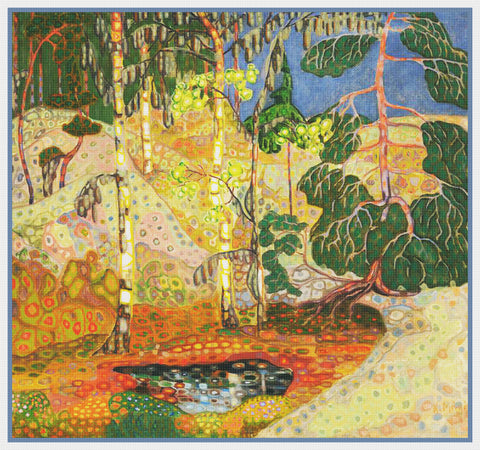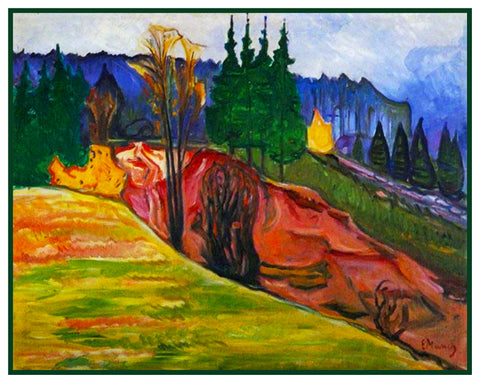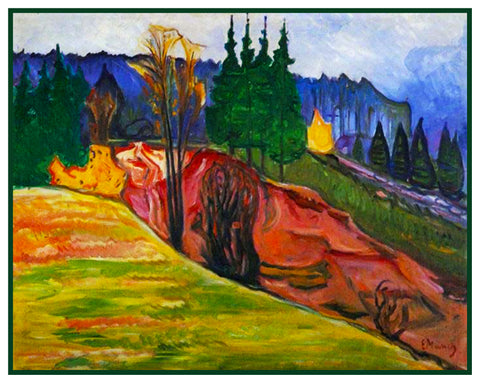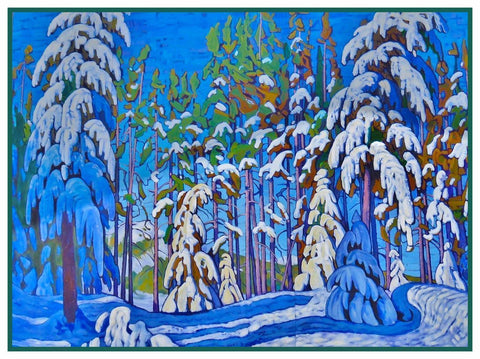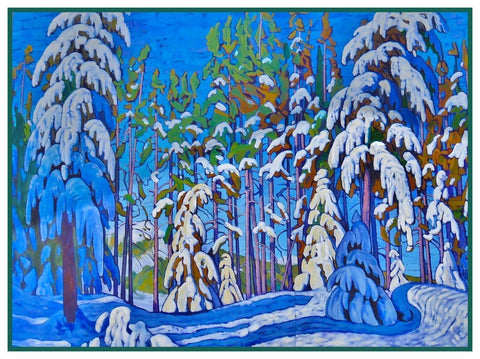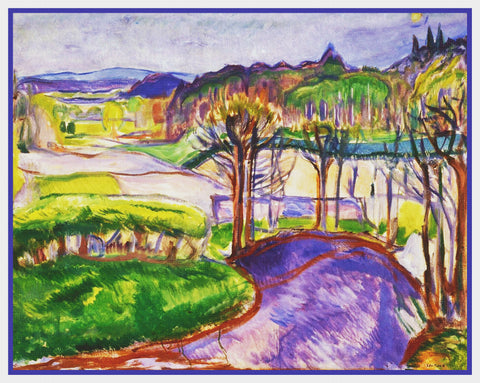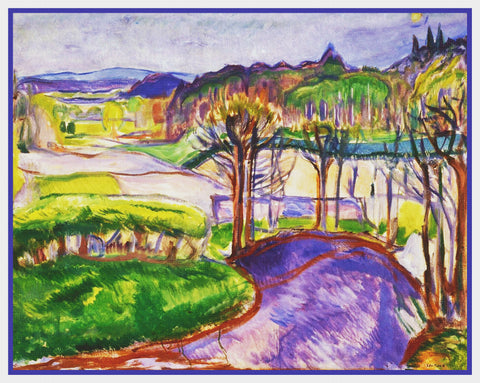Counted Cross Stitch Chart Specifics:
- This is a pattern that is used to sew and to create a counted cross stitch picture.
- COUNTED CROSS STITCH PATTERN Charted for 14 count fabric and DMC Cotton Floss.
- Finished size is 15 inches (210 stitches) by 14 inches (196 stitches).
- Chart uses up to 40 colors DMC Cotton Floss. Full stitches only. No half stitches and no backstitching necessary.
- We provide two charts both printed in black ink on bright white 11" by 17" paper. Chart #1 is a single page chart. Chart #2 (tired eyes) is a 4-page enlarged chart that eases eye strain.
Note to Stitchers: You will receive a chart that is of the entire image including the background. You can stitch the background or stitch on your choice of a 14-count solid cloth and create a raised embossed effect.
***This is not a kit. No Floss, Thread or fabric are included***
What inspired this pattern:
Konrad Vilhelm Magi, 1878-1925, was an Estonian painter, primarily known for his landscape work. He was one of the most colour-sensitive Estonian painters of the first decades of the 20th century, and Magi's works on motifs of the island of Saaremaa are the first modern Estonian nature paintings. Magi continued his art education as an unattached student in Saint Petersburg (1903-1905), studying under Amandus Adamson. In the autumn of 1907, he went to Paris. There Magi studied at a free academy. From 1908 to 1910, he lived in Norway. In 1912, Magi returned to Tartu, where he worked as an art teacher.
In Aland, he created delicate plant vignettes in the style of Art Nouveau: Kahekesi (Two together; 1908; China ink drawing). In Paris, Magi was influenced by Impressionism and Fauvism, which had a significant impact on his colours: Lilleline vali majakesega (A flower field with a little house; 1908-1909), Norra maastik manniga (A Norwegian landscape with a pine; 1910). From 1918, the influence of Expressionism is manifest, fostered by Magi's extreme sensitivity and emotional response to the anxious times: Puhajarv (Lake Puha); (1918-1920), Otepaa maastik (Landscape of Otepaa); (1918-1920). Also influenced by Expressionism are his big figure compositions Pieta (1919), Kolgata (Golgatha) (1921).Magi's new artistic period, begun on a trip to Italy, brought calmer tempers: Varemed Capril (Ruins in Capri; 1922-1923). Along with nature pictures, he painted flowers and portraits. Magi's mostly beautiful female models express the Art Nouveau ideal of beauty: Holsti (1916). In his later portraits from the 1920s, a more serious temper is expressed: Madonna (1923-1924).


![[product_title] - Orenco Originals LLC Counted Cross Stitch](http://www.orencooriginals.net/cdn/shop/products/01a15x14konradmgifarmlandscapenorramaastikstitched_1024x1024.jpg?v=1599024273)
![[product_title] - Orenco Originals LLC Counted Cross Stitch](http://www.orencooriginals.net/cdn/shop/products/01a15x14konradmgifarmlandscapenorramaastikstitched_medium.jpg?v=1599024273)
![[product_title] - Orenco Originals LLC Counted Cross Stitch](http://www.orencooriginals.net/cdn/shop/products/362737574550-1_3cf708c8-fdfe-4739-8033-c32c5705292f_medium.jpg?v=1599024273)
![[product_title] - Orenco Originals LLC Counted Cross Stitch](http://www.orencooriginals.net/cdn/shop/products/362737574550-2_e775426f-4689-4a07-ac61-1c144c11cf93_medium.jpg?v=1599024273)
![[product_title] - Orenco Originals LLC Counted Cross Stitch](http://www.orencooriginals.net/cdn/shop/products/362737574550-3_316420a6-e0da-4e87-8c18-a46aa635b01b_medium.jpg?v=1599024273)
